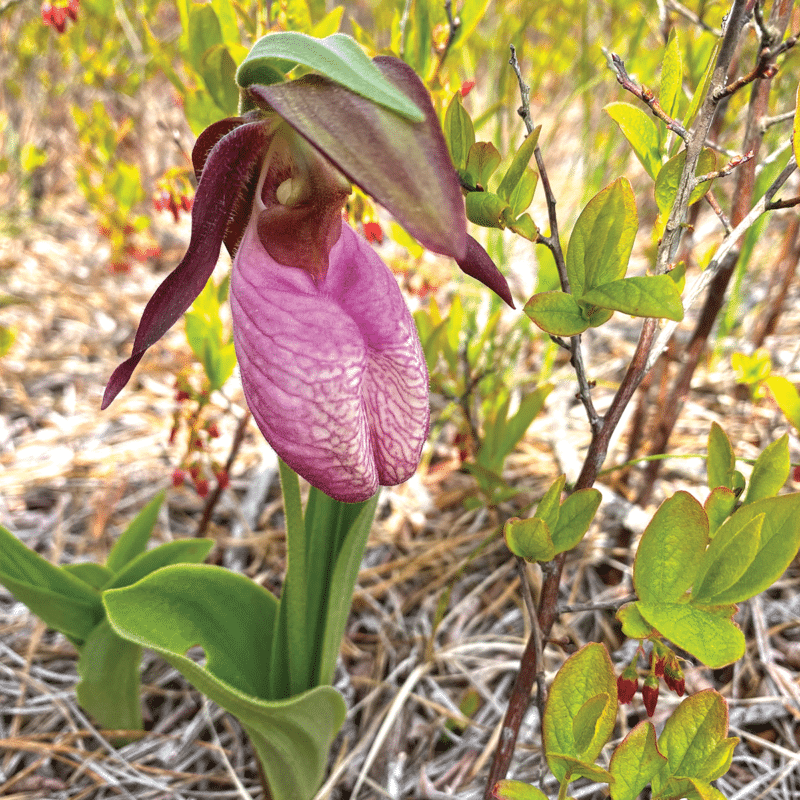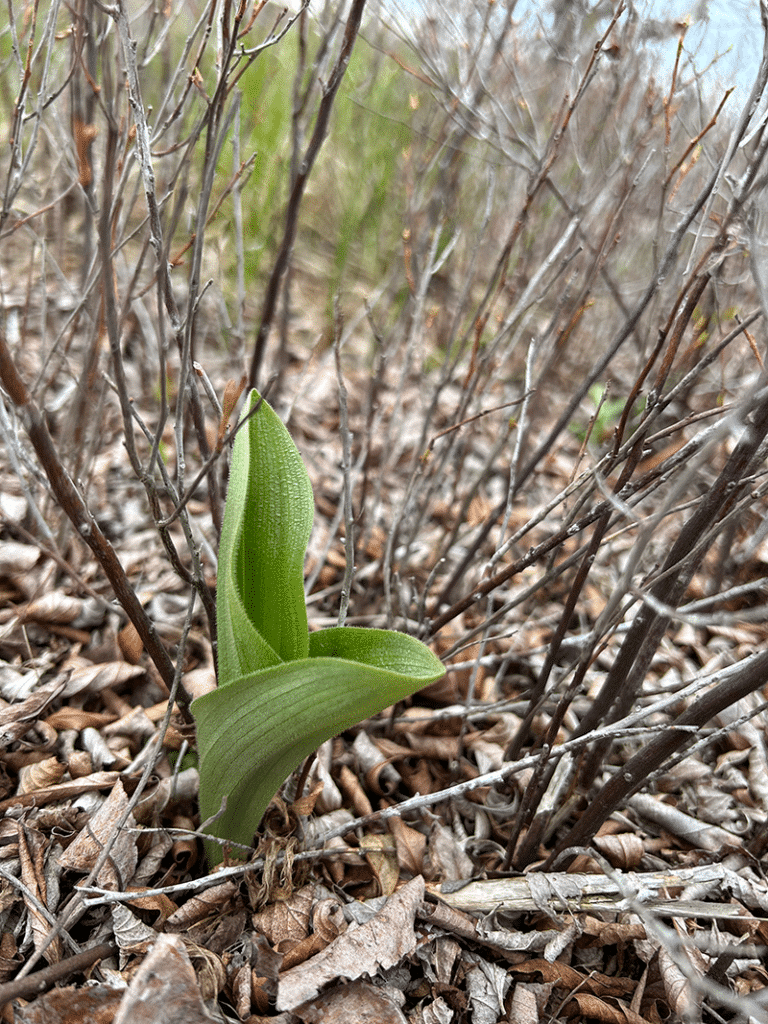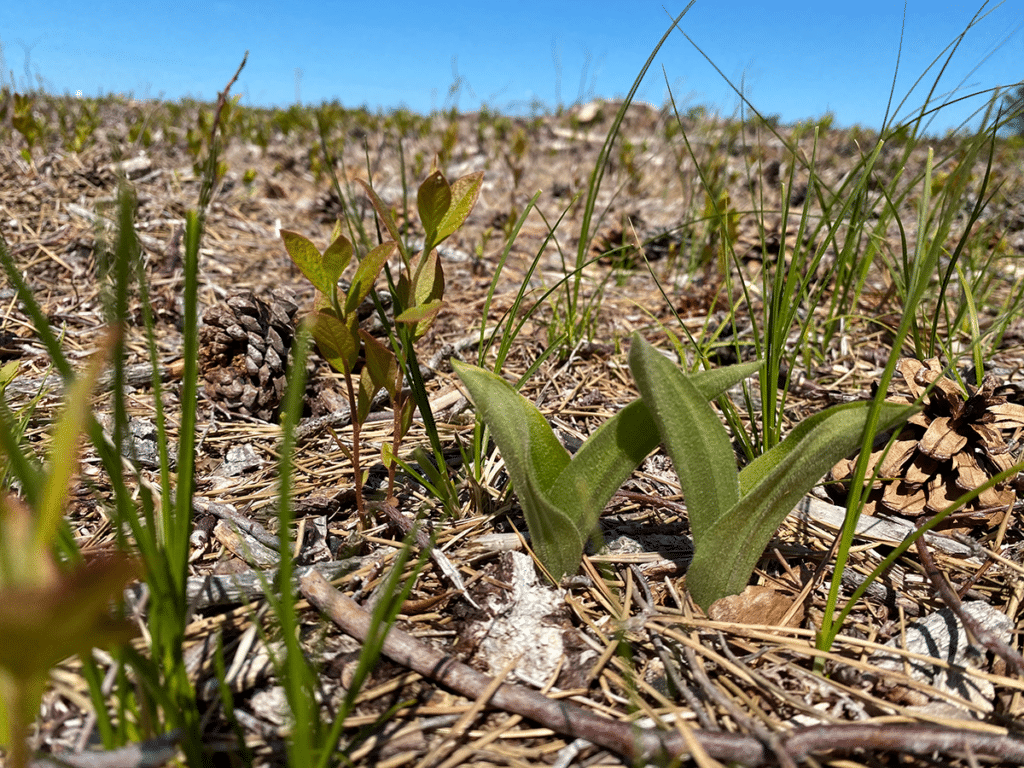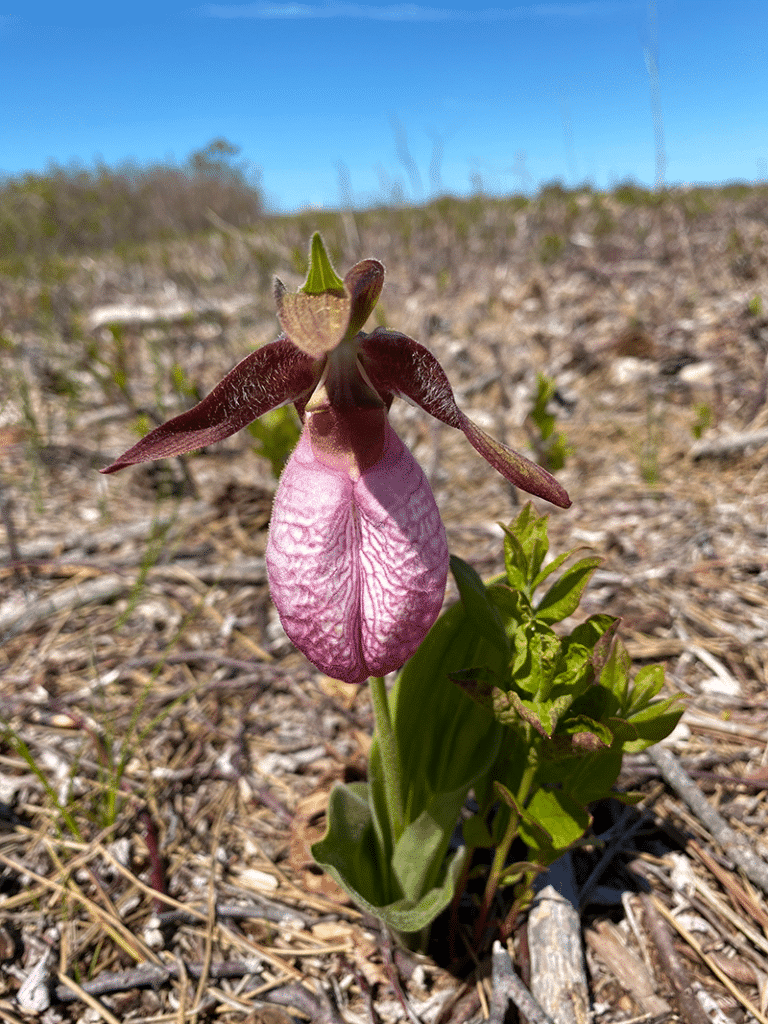by Dr. Sarah Treanor Bois, PhD
Director of Research & Education at the Linda Loring Nature Foundation
It’s the time of year to hunt for one of my favorite spring flowers. No, not to pick, but to view and enjoy in the wild. The Pink Lady’s Slipper Orchid (or Lady Slipper Orchid), Cypripedium acaule, is emerging now in time to flower around Memorial Day. As the name implies, Lady Slipper Orchid flowers look like elegant pink ballet slippers. Of course, being a New England native orchid, these plants are much hardier that their delicate appearance implies. The Lady Slipper orchid is a hardy perennial that is able to withstand the brutal New England winters underground. The leaves emerge in springtime (usually early to mid-May) with the flowers visible late May to early June.
The flowers themselves, also known as moccasin flowers, are generally pink on Nantucket and variable from light to darker shades. There is also a Yellow Lady’s Slipper orchid (Cypripedium parviflorum) which is not found on Nantucket, but is more widespread on the mainland. The Pink Lady Slipper is the most adaptable of the lady slipper orchids in terms of its moisture tolerances. It can flower in bogs and wet woods as well as dry, sandy uplands. It just likes sterile, acid soil, which is perfect for Nantucket!
What makes a plant an orchid? Members of the family Orchidaceae are all perennial herbs which feature unusual bilaterally symmetric flowers with three petals and three sepals. Two of the petals are lateral and one forms the lower “lip.” They have masses of pollen known as pollinia, and tiny, dust-like seeds. Pink Lady Slippers consist of two pleated leaves near the ground. From between those leaves sprouts a long stalk that bears a single pink flower. The lower section of the orchid flower (the lip) forms an inflated pouch with a cleft in the center. The pink to white coloring of this pouch causes it to resemble a ballet slipper or moccasin. The pouch formed by the flower’s petals is actually an ingenious trap to lure bees and other insects into pollinating the plant. A bee that enters the flower looking for nectar cannot exit the way it entered. Instead, it must crawl to the back of the flower, rubbing against the flower’s pollinia (the solid mass of pollen), which will adhere to the bee’s back. Assuming this same bee then visits a second Pink Lady Slipper, this pollen will be deposited on the female stigma in the same manner. However, because the flower emits a nectarlike odor but produces no nectar, many bees are quick to realize the foolishness of entering additional lady slipper flowers with no reward, and so only a few of the flowers are pollinated each season.
Because of the pollinator attraction and size of the pouch-like flower, Lady Slipper flowers can be inhabited by pollinator predators. Most commonly, crab spiders will inhabit the pouch sac and attack and eat entering insects. When you find some of these orchids in the wild, check the pouch for visitors!
On Nantucket, this orchid is locally common, with each plant growing a single flower. These individual flowers tend to grow in clusters, so where you see one, you may see several. Off-island, the Pink Lady slipper is considered a woodland plant. On Nantucket, it occurs in more diverse habitats—the heathlands of Head of the Plains, shrublands of the south coast, boggy areas, and even in the dunes of Coatue. At the Linda Loring Nature Foundation, a heathland clearing between pine groves has often held dozens of Lady Slippers orchids. Between 2019 and 2021, after restoration efforts cutting Japanese black pine trees, the cleared area was awash in pink lady slipper plants. Some were only vegetative (not blooming that year), but there were hundreds appearing after the pine clearing. Today, the Pink Lady Slippers in that area persist, but the numbers have diminished over time.
Even though we consider these orchids a special part of the Nantucket flora, Pink Lady Slipper orchids actually have an extensive range. They can be found in the eastern third of the United States, particularly in the Great Lakes region and the Northeast, south along the Appalachians to Alabama. This plant is widespread in Canada, where it is found in every province except British Columbia. Within its geographic range, it can be found in a wide variety of environments: from coastal plains, to pine barrens, to mountaintops. Lady Slipper orchids require highly acidic soil, but tolerate a range of shade and moisture, though it prefers at least partial shade and well-drained slopes. The acidic soils of our pines and heathland plant communities are well-suited to the orchid’s requirements.
While many have tried, Lady Slipper orchids are notoriously difficult to grow and propagate. They require a special fungus association for germination. This delicate relationship is necessary for seed germination, but is not required once plants begin making true leaves. Once established, lady slipper plants will propagate on their own and live for many years if left undisturbed. Because a picked lady slipper will not rejuvenate itself, and the plant has a less than 5% transplant success rate, they are often considered “off-limits” for picking. Because the Lady Slipper orchid takes many years to go from seed to mature plants, the gathering of seed-bearing specimens is presently unsustainable and not recommended.
Remember to take only pictures and leave only footprints.






